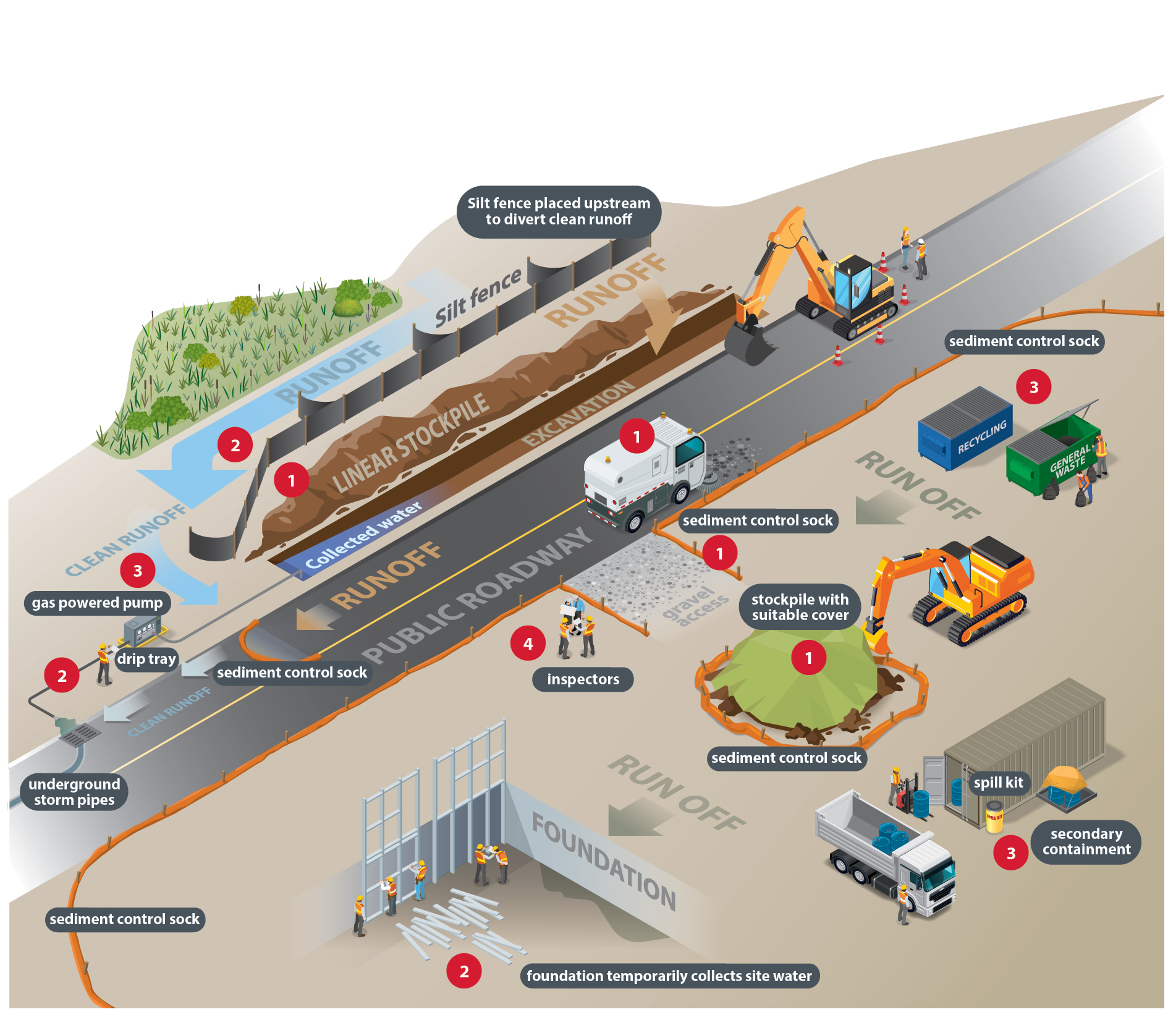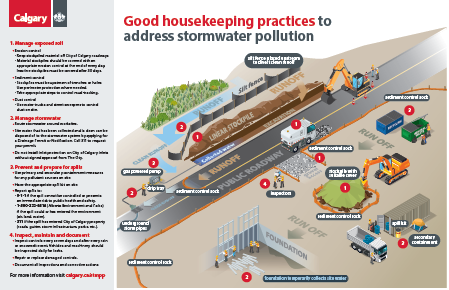Good Housekeeping Practices to Address Stormwater Pollution
By implementing, monitoring and documenting cost-effective best management practices (BMPs), also referred to as good housekeeping practices, sites can reduce the risk of releasing pollutants to Calgary’s stormwater system.
Common categories of good housekeeping practices are listed below. You can also download a handy checklist to document the implementation and maintenance of these practices. Each site has its own unique characteristics. Only select the practices that work for your site or come up with other best practices that are not covered here.

1. Manage exposed soil
Erosion control
- Keep stockpiled material off City of Calgary roadways.
- Material stockpiles should be covered with an appropriate erosion control at the end of every day. Inactive stockpiles must be covered after 30 days.
Sediment control
- Stockpiles must be upstream of trenches or holes.
- Use perimeter protection where needed.
- Take appropriate steps to control mud-tracking.
Dust control
- Use water trucks and street sweepers to control dust on site.
2. Manage stormwater
- Route stormwater around worksites.
- Site water that has been collected and is clean can be disposed of to the stormwater system by applying for a Drainage Permit or Notification. Call 311 to request your permit.
- Do not install inlet protection on City of Calgary inlets without signed approval from The City.
3. Prevent and prepare for spills
- Use primary and secondary containment measures for any pollutant sources on site.
- Have the appropriate spill kit on site.
- Report spills to:
- 9-1-1 if the spill cannot be controlled or presents an immediate risk to public health and safety.
- 1-800-222-6514 (Alberta Environment and Parks) if the spill could or has entered the environment (air, land, water).
- 311 if the spill has entered City of Calgary property (roads, gutter, storm infrastructure, parks, etc.).
4. Inspect, maintain and document
- Inspect controls every seven days and after every rain or snowmelt event. Vehicles and machinery should be inspected daily for leaks.
- Repair or replace damaged controls.
- Document all inspections and corrective actions.


